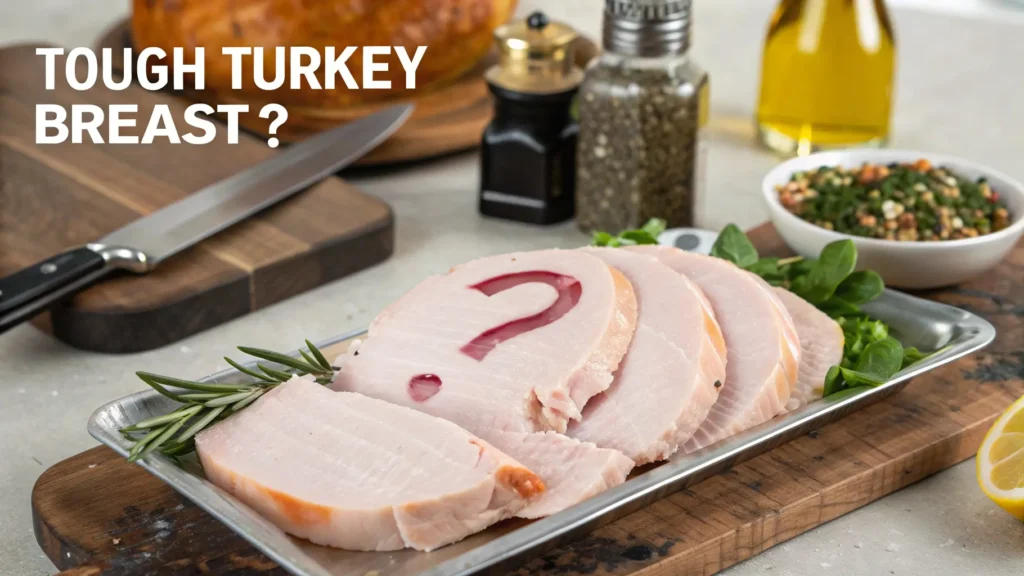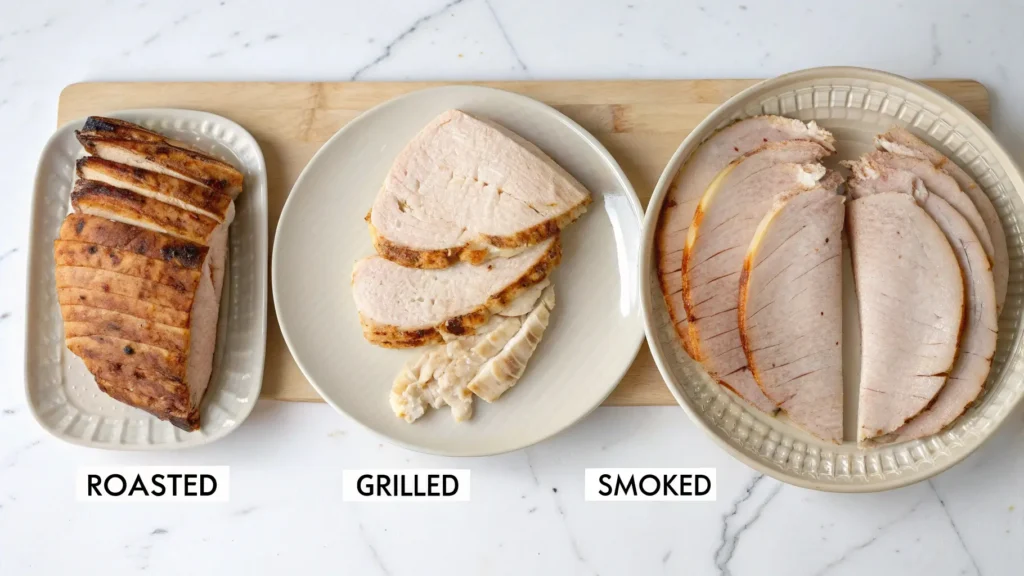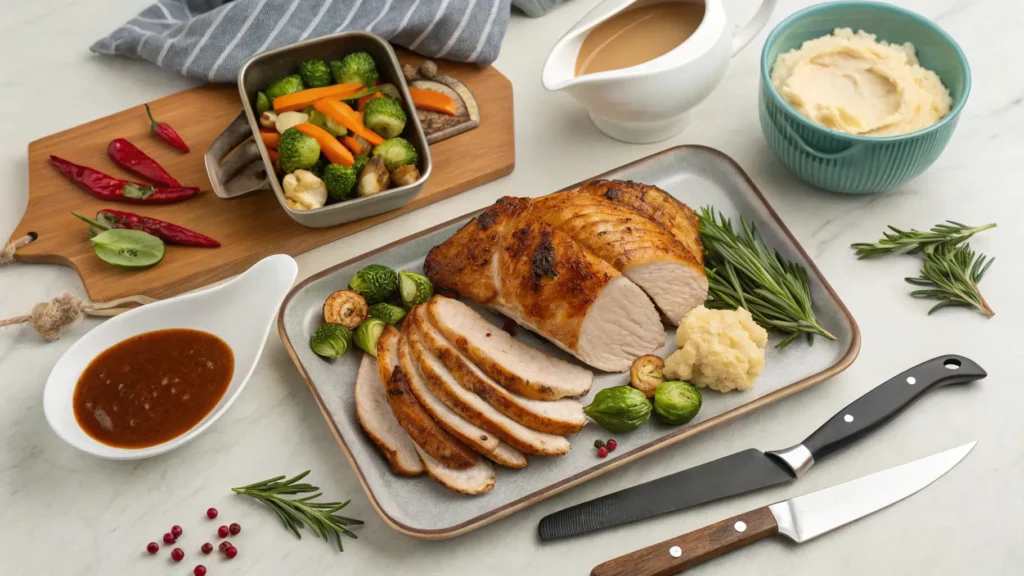Cooking turkey breast can be a daunting task, especially if you’re aiming for juicy, tender slices to delight your guests or elevate your meals. Unfortunately, many of us have faced the frustration of ending up with a tough, chewy turkey breast. Why does this happen, and how can it be avoided?
In this article, we’ll uncover the reasons behind tough turkey breast and share actionable tips to achieve tender perfection. We’ll explore common cooking pitfalls, discuss the science behind meat tenderness, and offer practical advice for preparation, cooking, and even salvaging overcooked turkey. Let’s dive in!

Introduction to the Problem
Why Turkey Breast Toughness Matters
For many, turkey breast is a go-to protein for holiday feasts, meal prepping, or even sandwiches. Its lean nature makes it a healthy choice, but this same characteristic often leads to dryness or chewy textures. A tough turkey breast isn’t just a culinary mishap—it can ruin the meal’s appeal and waste your time and effort.
Understanding what makes turkey breast tough is the first step to fixing the issue. Whether you’re roasting, grilling, or slow-cooking, certain missteps can sabotage your efforts. For instance, did you know overcooking isn’t the only culprit? The type of turkey, the preparation method, and even slicing technique can impact the texture.
First Signs of Tough Turkey: How to Identify It
Before you cut into your turkey, there are telltale signs that it might be tough. If the surface looks overly dry or lacks a golden, moist appearance, that’s your first clue. Once sliced, tough turkey often has stringy fibers, a lack of juiciness, or requires excessive chewing. Recognizing these signs early can help you adjust future cooking methods.
Stay tuned as we unravel the main causes behind turkey breast toughness and provide step-by-step strategies to transform your cooking game!
Common Causes of Tough Turkey Breast
Overcooking and Its Effects on Turkey Texture
Overcooking is one of the most common reasons behind tough turkey breast. When turkey breast is exposed to high heat for too long, its muscle fibers tighten, squeezing out moisture. The result? A dry, chewy texture that’s anything but appetizing. Using a meat thermometer can help you avoid this mistake by ensuring the turkey breast reaches the ideal internal temperature of 160°F, where it’s safe to eat but still tender.
Surprisingly, even small temperature overshoots can lead to a dramatic loss of juiciness. That’s why paying close attention to timing is crucial. Remember, once the turkey breast is out of the oven, carryover cooking will raise its temperature a few degrees.
Insufficient Moisture: The Role of Juiciness in Tenderness
Lack of moisture is another culprit in the quest to understand what makes turkey breast tough. Turkey breast is naturally lean, so it doesn’t have much fat to keep it moist during cooking. Without proper preparation—like brining or adding fat-based marinades—it can dry out quickly.
Brining, for instance, helps turkey absorb water and salt, locking in moisture during cooking. If you skip this step, the natural juices might evaporate, leaving the meat stringy and lifeless.
Choosing the Right Turkey: Age and Breed Matters
Did you know that the turkey’s age and breed can impact its texture? Older turkeys or certain heritage breeds can have tougher muscle fibers, making their meat less tender. If you’ve ever purchased a turkey from a farm or organic source only to find it tough despite proper cooking, the bird’s age may be to blame.
For a more tender option, choose a younger bird or a commercial breed known for softer meat, like Butterball. While heritage turkeys boast flavor, they may require additional preparation, such as extended brining or slower cooking techniques, to soften the meat.
How Cooking Methods Impact Turkey Texture

Roasting Techniques That Work (or Fail)
Roasting is a classic method for cooking turkey breast, but it’s also where many cooks falter. High initial temperatures can cause the outer layers to dry out before the inside is fully cooked. On the other hand, roasting at too low a temperature can make the meat rubbery.
One effective strategy is to roast at a consistent moderate heat, around 325°F, with the turkey covered for the first half of the cooking time. This traps steam, keeping the meat moist. For additional flavor and tenderness, consider placing aromatic vegetables and broth in the roasting pan to create a moisture-rich environment.
The Role of Brining: Moisture and Flavor Enhancement
Brining is a game-changer when it comes to achieving juicy turkey breast. This method involves soaking the meat in a saltwater solution, often enhanced with sugar and spices, for several hours or overnight. The salt helps the turkey retain water, ensuring it stays juicy during cooking.
For those short on time, dry brining—rubbing the breast with a salt mixture—can also work wonders. Both methods not only prevent dryness but also enhance flavor, addressing multiple issues in one step.
Alternative Cooking Methods: Slow Cooking and Braising
If roasting isn’t your thing, slow cooking or braising are excellent alternatives to avoid tough turkey breast. These methods use low, steady heat and moisture to break down muscle fibers, resulting in tender, flavorful meat.
For slow cooking, adding broth, onions, and garlic to the pot creates a delicious base that infuses the meat with flavor as it cooks. Braising, on the other hand, involves searing the turkey breast before simmering it in a flavorful liquid. Both techniques are nearly foolproof and ideal for ensuring juicy results.
By mastering these cooking methods, you can say goodbye to the question of what makes turkey breast tough and hello to perfectly tender meals every time.
Pre-Cooking Tips for a Tender Turkey Breast
Choosing the Best Turkey Breast: What to Look For
Selecting the right turkey breast is the first step to avoiding the dreaded question: What makes turkey breast tough? Look for a young, high-quality bird. Organic or free-range turkeys are flavorful but may require additional preparation, like brining, to ensure tenderness. Commercially bred turkeys, such as Butterball, tend to yield softer, juicier meat with less effort.
Additionally, inspect the packaging for phrases like “natural juices added” or “pre-brined.” These indicate that the turkey has been treated to retain moisture, saving you an extra step in preparation.
Dry vs. Wet Brining: What Works Best for Tenderness?
Brining is essential for tender turkey breast. Wet brining involves soaking the turkey in a saltwater solution, which enhances moisture retention. On the other hand, dry brining—rubbing the meat with salt and spices—provides similar benefits but with less mess and more concentrated flavor.
For best results, let the turkey brine for at least 12 hours. Whether you choose wet or dry, this step ensures your turkey breast is infused with flavor and moisture, addressing common issues with toughness.
Temperature and Timing: Getting It Just Right
Cooking turkey breast without drying it out is all about precision. Preheat your oven to 325°F, and aim for an internal temperature of 160°F for the juiciest results. Use a meat thermometer to check the thickest part of the breast, avoiding the bone.
To improve the texture further, let the cooked turkey rest for 10–15 minutes before slicing. This allows the juices to redistribute, keeping the meat moist.
For more tips on preparing turkey, check out this Creole Butter Turkey Breast Recipe on Tangle Recipes.
Post-Cooking Solutions for Tough Turkey

Slicing Across the Grain for Better Texture
If your turkey breast turns out tough despite your best efforts, slicing it correctly can still save the meal. Cutting across the grain—rather than along it—shortens the muscle fibers, making the meat easier to chew. Use a sharp knife to create thin, even slices for the best results.
Using Sauces and Gravies to Enhance Moisture
Dry turkey breast can be revitalized with flavorful sauces or gravies. A well-made gravy, prepared from the turkey drippings, can reintroduce moisture and enhance taste. Alternatively, creamy sauces or marinades can help mask dryness and make the meat more enjoyable.
Consider pairing your turkey with a classic cranberry sauce or a honey-mustard glaze to balance flavor and texture.
Reheating Without Overdrying
Reheating turkey breast can be tricky, as it’s prone to drying out. To keep it moist, add a splash of broth or gravy before reheating in the oven at a low temperature (around 275°F). Cover the turkey with foil to trap steam and preserve its juiciness.
These post-cooking tips can ensure that even a slightly tough turkey breast remains a satisfying part of your meal. For more delicious ideas, check out other recipes on Tangle Recipes.
FAQs: People Also Ask
How Do I Keep Turkey Breast from Getting Tough?
The key to preventing tough turkey breast lies in preparation and cooking techniques. Start by brining the meat to lock in moisture and enhance tenderness. Use a meat thermometer to monitor the internal temperature and avoid overcooking. Low and slow cooking methods, like roasting at 325°F or slow cooking, can also help maintain a juicy texture.
What’s the Best Internal Temperature for Turkey Breast?
To keep turkey breast tender, aim for an internal temperature of 160°F. Overcooking past this point causes the meat to lose moisture, resulting in a tough, chewy texture. Always let the turkey rest after cooking to allow the juices to redistribute evenly.
Does Turkey Breast Tenderness Depend on the Breed?
Yes! Commercial breeds like Butterball are bred for tenderness and ease of cooking. However, organic or heritage turkeys may require extra care, such as brining or slow cooking, to achieve similar results.
Conclusion and Final Tips
Key Takeaways for Perfect Turkey Breast Every Time
Cooking a tender turkey breast doesn’t have to be a mystery. By understanding what makes turkey breast tough, you can avoid common mistakes like overcooking or skipping preparation steps. Brining, monitoring internal temperature, and choosing the right breed are essential for success.
Remember, even if your turkey turns out slightly tough, slicing across the grain or adding flavorful sauces can salvage the dish. With these tips, you’ll never have to worry about tough turkey breast again—your guests will be asking for seconds instead!

